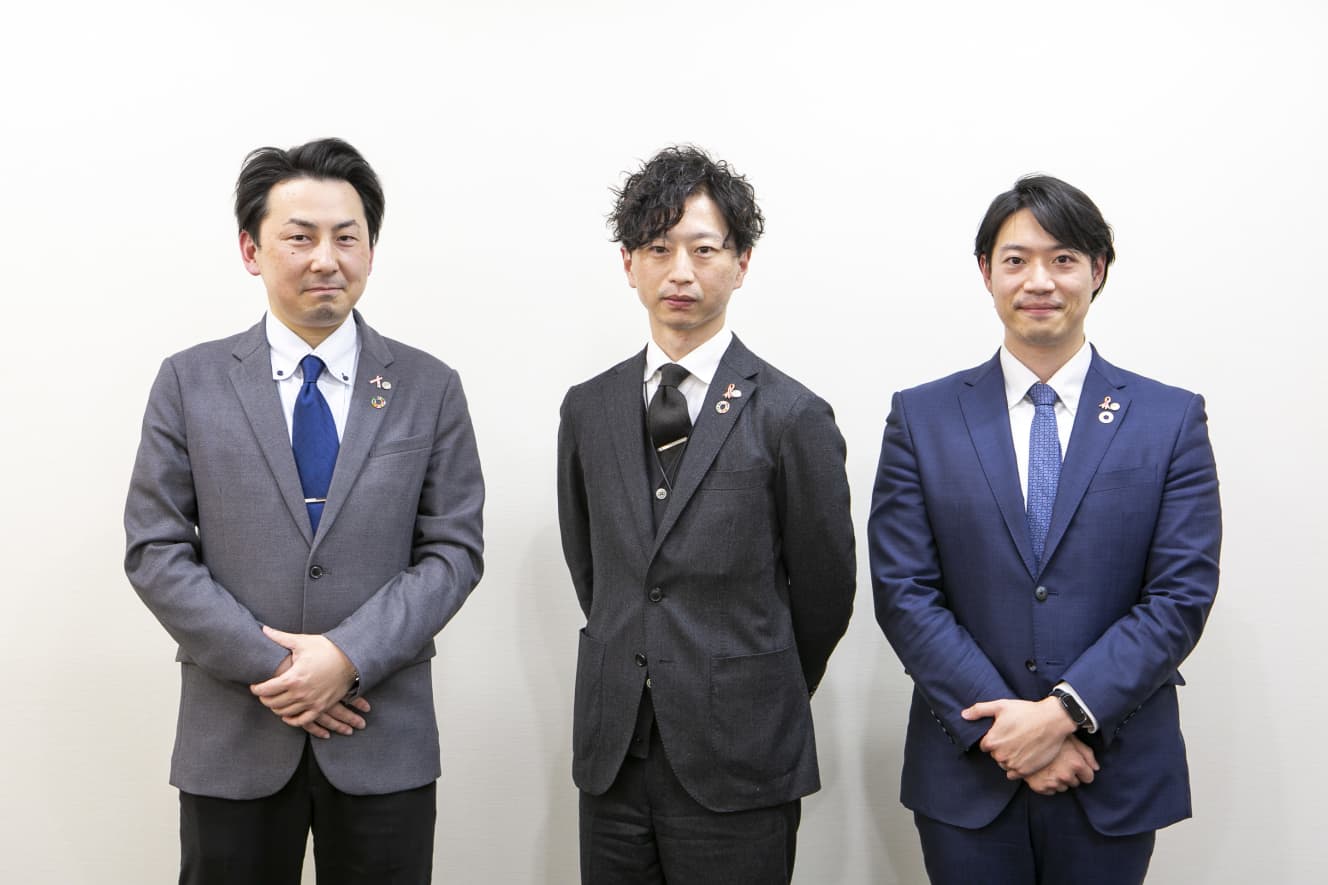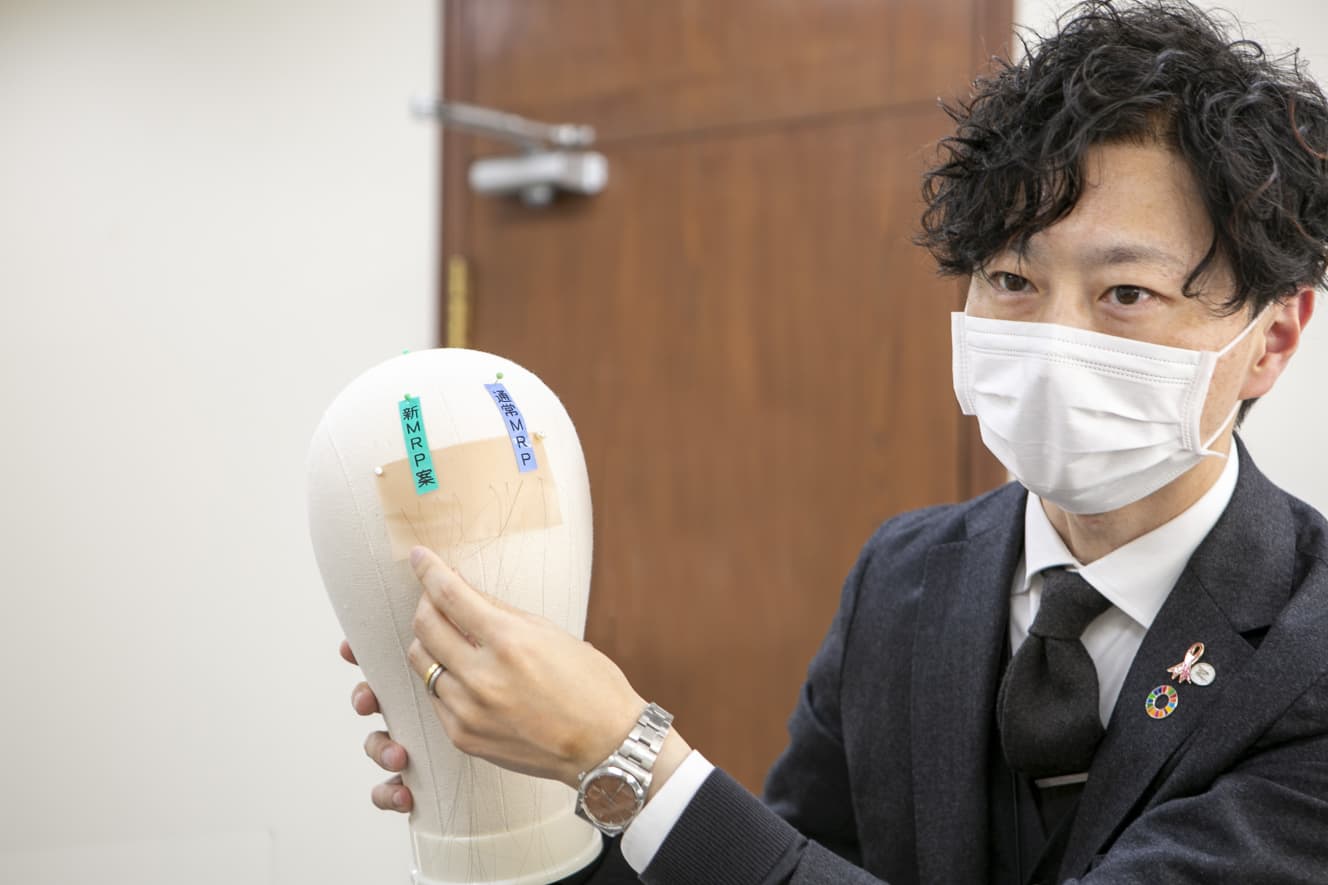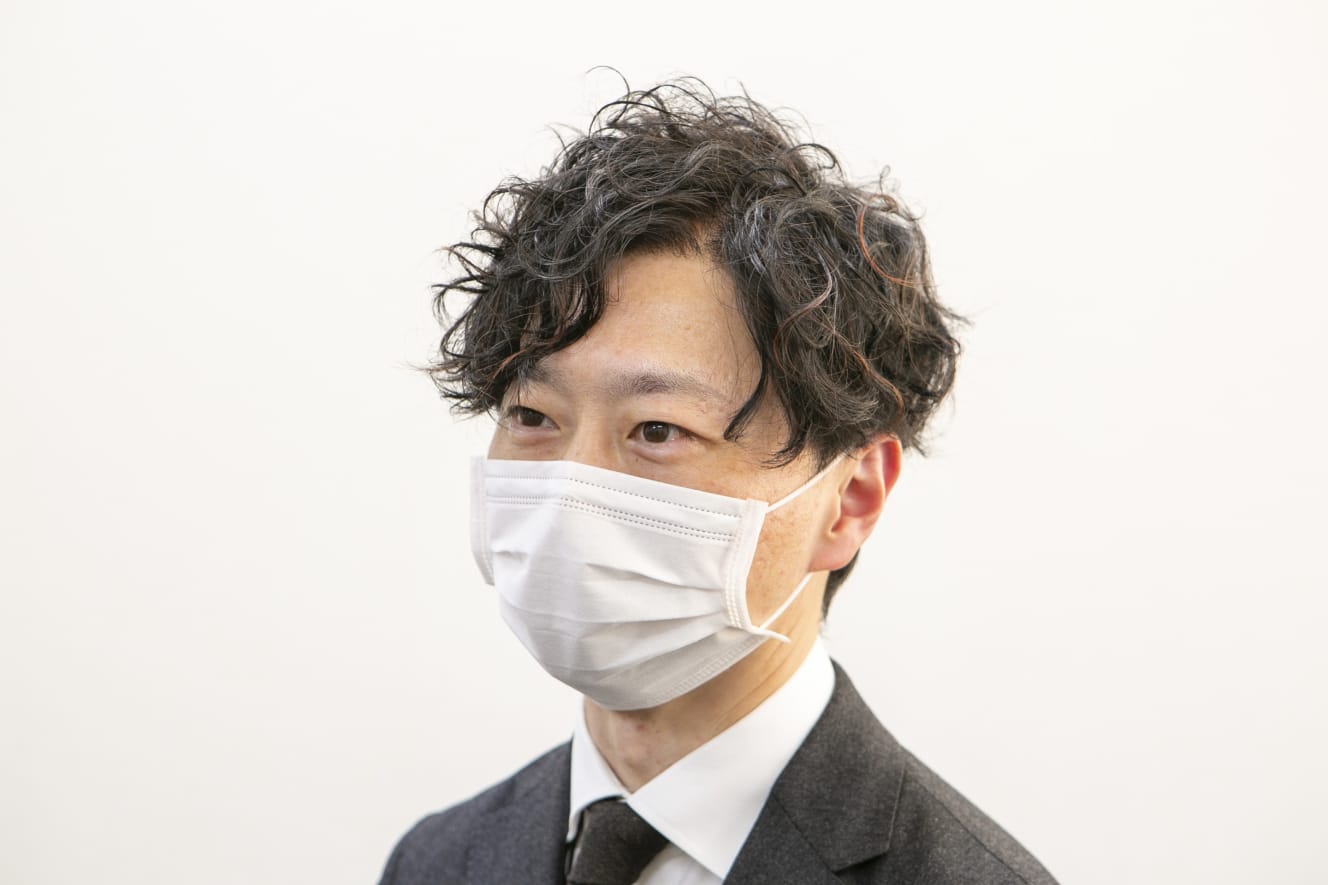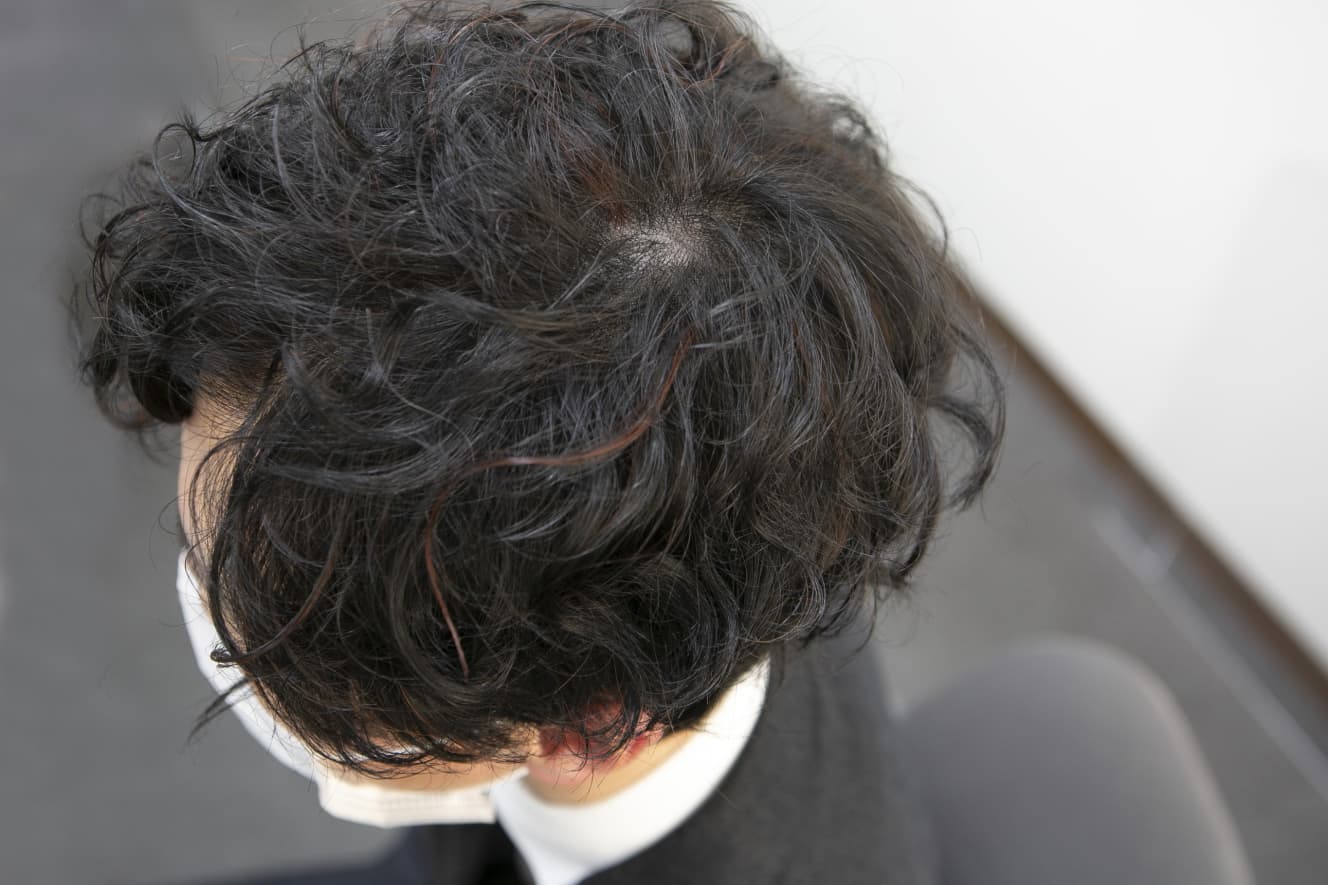The Amazing Latest Technology of “Hair Extensions and Wigs,” a Much-Talked-About Rejuvenation of Ms. Kiritani
Mr. Kiritani on “Monday Night Fakas” is a hot topic!
It was early January of this year when Hiroto Kiritani, who lives a shareholder’s lifestyle, became the talk of the town on “Monday to Night Fakashi” (Nippon Television Network Corporation) after he rejuvenated himself by removing spots and increasing his hair.

In fact, Mr. Kiritani, with his frizzy hair, looked like a different person, but what was curious was that even when he blasted off on his bicycle as usual, his hair fluttered in the strong wind, but did not come off. How does it work? We caught up with him for an interview with “Art Nature Saizensen.

The company offers the two main products (wigs) and the Marp hair growth method that utilizes and grows one’s own hair, as seen in TV commercials. When creating a wig, the hair is cut to adjust the length and amount of hair to suit the individual, but many people were unwilling to spare even the hair that fell to the floor in the process. One of the products that emerged from this background at the time was the “Marp Hair Growth Method.
Normally, two to three hairs grow from each pore, but when only one hair grows from each pore, this is said to be the cause of thinning hair. The principle of the Marp hair growth method is to make use of such one remaining hair and tie artificial hairs to it to “make the one hair that is currently growing look like two or three hairs.
However, tying artificial hairs to each strand is a tedious and time-consuming process, but won’t the hairs that have been tied to the strands fall out together with the original hairs?
Generally, hair grows about 1 cm per month, and a strand of hair lasts 3 to 5 years for men and 6 to 7 years for women, so it lasts longer than you might think.
Besides, on the contrary, it is natural because it falls out. The strength of Marp is that it can be adjusted by replenishing it when it falls out, and even when the hair grows longer and the knots in the artificial hair come up, it is generally possible to gradually add more over a period of three to five months without people noticing,” says Kaneko, assistant manager of the Men’s Planning Group of the Sales Planning Department.
Wigs are suitable for people who have no hair or who have a specific goal of the hairstyle they want to achieve from the beginning and want to keep that style.
However, many men are resistant to wigs and wigs, and wish to “gradually increase their hair without people noticing,” so many use Marp, which lets their natural hair grow back, to gradually increase their hair.
What about maintenance of artificial hair?
In our case, we have stylists at all of our stores nationwide, all of whom are licensed barbers and hair stylists, so many of our customers come to our stores for a haircut. If they want to add more hair at that time, they can simply replenish it, and some people also add more before an event they want to get into the swing of things or before meeting friends for the first time in a long time.
In addition, we recommend that our customers leave their haircuts to our stores.
The reason for this is that the artificial hair of MARP is completely indistinguishable even with a professional eye, so it would be a waste to have it cut with a pair of scissors at a general barbershop after you have gone to the trouble of adding more hair. In this respect, our stylists can tell which part is the natural hair and which part is the artificial hair, so you can request the style you like with peace of mind,” says Kaneko.
Two years ago, a groundbreaking technological advancement…
I was shown the actual product with artificial hair tied to human hair, and indeed, a layman could not tell any difference at all.
Furthermore, there were also major technological advances in 2019. Mr. Yauchi, section manager of the Men’s Product Group in the Product Development Department, who was awarded the MVP award within the company, explains the new technology.
The method of tying human and artificial hair together inevitably results in knots,” he said. So we thought we could make the knots smaller and more natural, so we cut off only the artificial hair at the knot part. The idea itself has probably been around for a long time, but since the average thinness of Japanese hair is 0.06 to 0.07 mm, there was no way to shave just the knot part,” says Mr. Yauchi.
Mr. Yauchi turned his attention to a method called “wet blasting,” which is used to sharpen precision machinery. This is a patented technology developed by Art Nature, which allows for the sharpening of artificial hair to the desired thickness by spraying a mixture of water and an abrasive agent only on the part of the hair to be sharpened.
I was shown the actual product, but the knots are not recognizable at all. …… Mr. Kaneko further adds.
Actually, this is just the beginning.

In addition to making the knot smaller, to make it more difficult for the knot to come undone, we added an uneven finish to the surface of the hair knot so that it locks in place like a lock. Actually, this was also a very difficult task. At first, I couldn’t cut the uneven surface properly, but I became friends with a vendor who makes wet-blasting machines, and in the course of talking about various things, he suggested ‘masking with thin tape or something,’ so I bought some very thin ruled tape at a local stationery store and started to work on it. We tried it and it worked,” says Yauchi.
However, until now, the length of the natural hair to be tied in had to be about five centimeters. In fact, some customers refused because their hair had not grown long enough to pinch.
So last fall, we developed a system that eliminates the act of tying the hair and allows the hair to be tied naturally by simply putting it through the ring and pulling on both sides. With this mechanism, it is now possible to hook artificial hairs as long as 1 cm of one’s own hair length,” says Yauchi.
In the pursuit of “naturalness,” a great deal of meticulous ingenuity has been accumulated over the past few years.
I asked them about their budget, which is a matter of concern.
By the way, how many artificial hairs does the Marp hair extension method require and how much does it cost?
Basically, the color and thickness of the hair are selected according to the person’s needs, and a certain amount of hair is prepared, so we ask the customer to purchase a large number of hairs at first.
1000 We offer a wide range of products from 100,000 to several tens of thousands of hairs at costs from 100,000 yen to 1,000,000 yen. Beyond that, it is additional and cheaper if many are purchased in bulk, but in small lots, the price varies from 100 yen to 40-50 yen per unit, and many people who want to grow a little first are implementing this service at a cost of 10,000-20,000 yen per month.
In addition to hair growth, some people enjoy hair extension as a framework because their hair has become thin and cannot be styled,” says Kaneko.
Even with marsupial, the upkeep, such as washing and drying hair, is no different from that of natural hair, and it can also be slept on.

The latest wigs are in the “skin showing era. Too natural…
However, those who have no natural hair left will have to use wigs. What is the latest situation?
Most men do not use wigs as a fashion item when they go out, but rather to keep their hair in place 24 hours a day, whether they are sleeping or taking a bath.
It is similar to Hollywood special makeup, but in our case, we use a method called “hair for life,” in which hair is applied directly to the skin.
Specifically, hairs are planted one by one by human hands onto a mesh-like material that replicates artificial skin, and then they are integrated into the skin with an adhesive cream that is like a skin glue.
Once attached, the wig is generally visited in 2-3 weeks for maintenance of the adhesive cream to prevent it from coming off in the process, as the skin metabolizes in a cycle of approximately 28 days.
During this time, the wigs do not come off even if the hair is washed normally, and they do not get steamed because they allow water and air to pass through.
In the past, people used to ‘hide’ their hair with a pitch-black wig, but that was the cause of its unnaturalness.
Now, however, we live in an age where people show their skin. The material used to cover the wig is a mesh, which allows the wearer’s true skin to be seen, making it look natural.
Furthermore, the knots are hidden behind the mesh material, making them invisible on the surface. When you are on a train, or when you come close to a train, if you can’t see the knots that are implanted in the wig, the naturalness is totally different,” said Kaneko.
After about an hour of explanation, Mr. Kaneko said.
‘Did you notice anything when you looked at Yauchi?’
When I said, “Oh, no way. ……,” Mr. Yauchi nodded, and I assumed he was around 30 years old, but he is actually 45 now! According to him, he actually has “almost no hair” on his head.

I myself joined Art Nature because I thought my hair would grow thin in the future, and I have tried all kinds of techniques and products.
I actually came from an ordinary liberal arts background and had no technical knowledge whatsoever. But because I am a user myself, I understand from the user’s perspective what people with thinning hair have trouble with and what they want. Naturalness is an absolute requirement, and we can evolve by thinking about how to make it natural every day, absorbing the users’ voices in detail, and using them to improve our products and technologies. Life is very different with or without hair,” says Mr. Yauchi.
In response to Mr. Yauchi’s words, Mr. Kaneko expressed his satisfaction.
He said, “Even though we talked for an hour at close range, he didn’t notice me at all. This is a victory for Art Nature!”
Interview and text: Wakako Tago
Born in 1973. After working for a publishing company and an advertising production company, became a freelance writer. She interviews actors and other actors for weekly and monthly magazines, and writes drama columns for various media. His main publications include "All Important Things Are Taught by Morning Drama" (Ota Publishing), "KinKiKids: Owarinaki Michi" and "Hey!Say!JUMP: When 9 Tobira Open" (both from Earls Publishing).
Photography: Mayumi Abe
